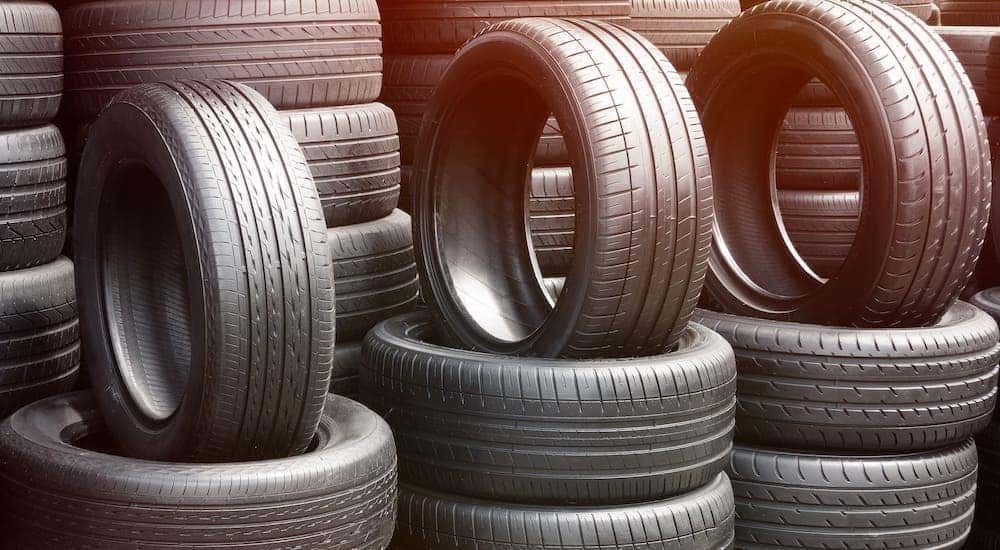Tire Service: Recognizing Tire Stress Tracking Equipments
Recognizing Tire Stress Surveillance Equipments (TPMS) is a crucial aspect of maintaining optimal car performance and security on the road. With developments in auto innovation, TPMS has actually ended up being a common function in contemporary cars, offering real-time info on tire pressure degrees.

Importance of TPMS
The significance of Tire Pressure Monitoring Systems (TPMS) depends on their capacity to improve car safety and efficiency with real-time tracking of tire stress degrees. Preserving the correct tire stress is crucial for ensuring optimum handling, braking, and overall safety and security of a car. TPMS offers drivers with prompt comments on any kind of overinflated or underinflated tires, allowing for prompt modifications to be made.
Elements of TPMS
Sensors are generally located in the tire shutoff stem or connected to the wheel assembly, where they gauge tire pressure and transmit information to the control module. Some progressed TPMS designs also present the real tire pressure readings for each tire, providing vehicle drivers with real-time info to guarantee optimum tire performance and safety. By checking tire pressure continuously, TPMS assists prevent crashes, minimizes tire wear, and improves gas efficiency, making it a crucial part for car safety and efficiency. mopar tire service specials.
Types of TPMS

On the other hand, indirect TPMS relies on the automobile's wheel rate sensing units to keep track of tire pressure. This system detects underinflation by comparing the rotational speeds of the wheels. Indirect TPMS is much less expensive than direct TPMS, as it uses existing sensing units within the automobile.
While straight TPMS uses extra exact readings, indirect TPMS is simpler in design and usually needs much less upkeep. Both systems have their limitations and advantages, and the option between them frequently depends upon aspects such as expense, car make, and personal preference. Comprehending the distinctions between these two sorts of TPMS can help vehicle proprietors make notified decisions pertaining to tire upkeep and security.
TPMS Maintenance Tips
Effective maintenance of TPMS is crucial for making certain optimum performance and safety of your vehicle. Routinely evaluating the TPMS sensing units for any type of damage or deterioration is critical. Make sure that the sensors are tidy and cost-free from particles that can conflict with their functioning. In addition, it is advisable to examine the sensing unit batteries periodically and change them as needed to assure exact analyses. Conduct routine examine the tire pressure degrees and compare them with the TPMS readings to ensure they are regular. Recalibrate the system adhering to the producer's standards if there are any type of disparities. Throughout tire rotation or substitute, make sure that the TPMS elements are taken care of thoroughly to stop any type of potential damage. If the TPMS cautioning light brightens on the dashboard, deal with the problem without delay by checking the tire click for source pressures and the total system for any mistakes. By sticking to these maintenance suggestions, you can extend the lifespan of your TPMS and improve the safety of your driving experience.
Advantages of Correct Tire Stress
Keeping correct tire stress, as stressed in TPMS Upkeep Tips, is essential for enjoying the various benefits related to optimal tire stress degrees. Among the key advantages of keeping the proper tire stress is boosted gas performance. When tires are properly blown up, there is much less rolling resistance, resulting in better fuel economy. Additionally, correct tire pressure makes sure even tire wear, prolonging the lifespan of the tires and advertising much safer driving conditions. With the best tire stress, cars additionally have better handling and grip, particularly in adverse climate condition. This can description boost general driving performance and safety and security for the motorist and passengers. Additionally, maintaining optimum tire pressure can add to a smoother and a lot more comfortable adventure by lowering vibrations and noise brought on by underinflated tires. Finally, the benefits of correct tire pressure exceed just tire longevity; they incorporate improved fuel efficiency, improved safety, far better car efficiency, and overall driving convenience.
Final Thought
To conclude, comprehending tire stress surveillance systems (TPMS) is essential for maintaining ideal tire pressure and guaranteeing car safety and security. By recognizing the significance of TPMS, being familiar with its parts, knowing the various kinds available, adhering to appropriate maintenance pointers, and recognizing the advantages of preserving proper tire stress, drivers can enhance their driving experience and prolong the life expectancy of their tires. Appropriate tire pressure is Resources essential to efficient and safe vehicle operation.
